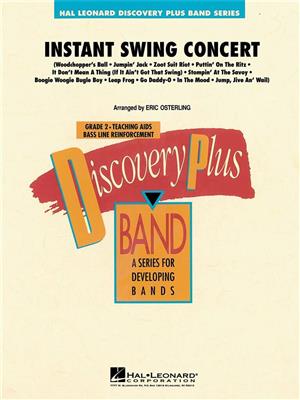Results
-
 £309.99
£309.99Symphony No. 9, Op. 160 - James Barnes
Premiered on September 21, 2018 in Lawrence, Kansas by the University of Kansas Wind Ensemble (Dr. Paul Popiel, conducting), James Barnes' Ninth Symphony was composed between January and late June of that same year. This large work was commissioned by a consortium of twenty-one college bands, community bands, professional bands and individuals to help mark the 70th birthday of the composer (b. 1949). It is an expansive forty-minute work in four movements, of which the composer writes, This is my last symphony... this work represents a compendium of all that I have learned during the fifty years of composing and scoring for this wonderful new medium: the modern wind band. The first movement, subtitled Elegy, is based around G minor. It is the longest movement of the symphony. Tragic and despondent in character, it is cast in sonata-allegro form. The second movement is entitled Scherzo. Barnes claims that I have always wanted to write a waltz, and that is how this movement is cast, in a modified rondo form in D minor. In contrast to the mood of the first movement, the scherzo is a delightful posy of expansive melody, splashy color, humor and rhythm. The third movement, which is in a modified tertiary form, is entitled Night Music. In contrast to the scherzo, this movement begins with a mysterious incantation, first displayed by solo Alto flute. The music becomes even darker and more mysterious, while overall the movement effectively expresses an otherworldly mood, ending with a solo soprano offstage which suddenly emerges, eerily singing a modified version of the opening incantation. Cast in sonata-allegro form, the fourth movement is most definitely a rousing Finale, beginning with a brilliant fanfare and undergoing several mood transformations before emerging into the final coda, ending the symphony with an energetic splash of color.
Estimated dispatch 7-14 working days
-
 £64.99
£64.99Christmas on a Snowy Night
As you listen to this beautifully orchestrated medley of holiday favorites, imagine all the warmth and glow surrounding what is best about the Christmas season. Including Let It Snow! Let It Snow! Let It Snow!, Silent Night andI'll Be Home for Christmas, this arrangement is scored to sound rich and full as only John Moss can do.
Estimated dispatch 7-14 working days
-
 £57.50
£57.50Instant Swing Concert
What a great idea! Here's 11 of the biggest swing hits from two eras, the 40's and the 90's, cleverly put together in a medley that will turn your concert hall into a dance hall. Eric's skilled writing makes it fun and easy to play for any group. This one's an entertainment winner. Includes: Woodchopper's Ball, Jumpin' Jack, Zoot Suit Riot, Puttin' On the Ritz, It Don't Mean a Thing (If It Ain't Got That Swing), Stompin' at the Savoy, Boogie Woogie Bugle Boy, Leap Frog, Go Daddy-O, In the Mood, and Jump, Jive An' Wail.
Estimated dispatch 7-14 working days
-
 £57.50
£57.50Our Winter Wonderland
Band with opt. Choir - Grade 2 The winter holiday season seems to bring out songs that simply make you feel good! Here is a collection of gems arranged in an easy-flowing style that is easy to learn and a joy to perform. The band arrangement is designed to be performed with or without the choir or strings. Includes: The Most Wonderful Time of the Year, Let It Snow! Let It Snow! Let It Snow! and Winter Wonderland. 08744127 SATB: $2.25 08744128 SAB: $2.25 08744129 2-Part: $2.25 04490326 String Pak: $40.00 08744130 Accompaniment/Full Performance CD: $35.00
Estimated dispatch 7-14 working days
-
 £149.40
£149.40Sommernatt ved fjorden - Ketil Bjørnstad
"By the Fjord" is written by the Norwegian composer Kjetil Bjrnstad and is the most famous song from the musical work "Leve Patagonia" which was published in 1978. The work is written as a modern suite about the Oslo Bohemians Hans Jaeger and OdaLasson sitting in a pram on the fjord a summer night. Odas sister sees the couple on the sea from her window and tells us the story.Kjetil Bjrnstad wrote "By the Fjord" in his house outside Tvedestrand early spring 1978. He was initially notfully satisfied and considered disposing it. The beautiful music has luckily made the song a classic in Norwegian music.To the conductorThis arrangement can be used with both vocal andinstrumental soloist. Its always a challenge toarrange songs with many verses that tells a story if it is to be played by an instrumental soloist instead of a singer. Because of that, please cut the repeats if it's performed without lyrics.Solo-parts included in the set: Vocal Flute Altosax Flugelhorn Euphonium - Trombone
Estimated dispatch 7-14 working days
-
 £127.30
£127.30Easy Peasy - Hilde Høyvik Dahl
This suite is written for beginning band at grade level 1. It consists of five short movements of various style. You may perform the movements as single pieces. The composition consist basically of three voices to make it playable also for smaller ensembles. However, it's preferable that trumpet/cornets play part no. 1 and clarinets play part no. 2 when necessary.
Estimated dispatch 7-14 working days
-
 £110.99
£110.99Imagine - John Lennon
John Lennon's career was far from over when in April 1970, following the recording of the album Let It Be, the Beatles split up. This musically gifted and creative composer of many Beatles songs had a number of solo hits before he was tragically killed in 1980. Imagine was one of John Lennon's best songs and it remained in the charts long after his death. It is still not forgotten and is now thought of as a true pop classic. Takashi Hoshide has produced this attractive new arrangement for concert band.
Estimated dispatch 7-14 working days
-
 £149.40
£149.40Dream a Little Dream of Me - Gus Kahn
This song was written in 1931 by Fabian Andre and Wilbur Schwandt with lyrics by Gus Kahn. It's now one of the most popular songs from the Great American Songbook and it's also recorded in many versions. Ella Fitzgerald, Louis Armstrong and Nat King Cole are among the most famous ones that have recorded it. In later years singers like Michael Bubl, Diana Krall land Robin Williams have all recorded "Dream a Little Dream of Me". This arrangement is inspired by the version by American band Chicago from their 1995 album release "Night & Day".
Estimated dispatch 7-14 working days
-
 £92.50
£92.50Porgy and Bess (Medley) - George Gershwin
The music from the timeless masterwork Porgy and Bess has fascinated generation after generation. Oddly enough, at its premiere the critics presented mixed reaction: some calling it the pioneering work of a new folk-opera genre, and others condemning it as merely a succession of hit songs. Fortunately, time has secured its place in history. James Barnes has skillfully crafted a wonderful scoring of "I Got Plenty O' Nuttin'," "It Ain't Necessarily So," "Summertime," "Crab Man," and "Bess, You Is My Woman Now." This is Gershwin at his best! (8:30)
Estimated dispatch 7-14 working days
-
 £89.99
£89.99Norwegian Overture - Traditional
It is not entirely sure where the melody originates that forms the basis for Norwegian Overture. Most sources point in the direction of a certain J.H. Nebelong in about 1881. It is also possible that he was the first to note down this traditional melody and put his name to it.The lyrics are by a certain A.H. Brorson and were set to the music at a later date. The original title is "store hvide flok", which means "the big white herd". Several composers have used this theme, including Edvard Grieg and the Danish Carl Nielsen.
Estimated dispatch 7-14 working days
